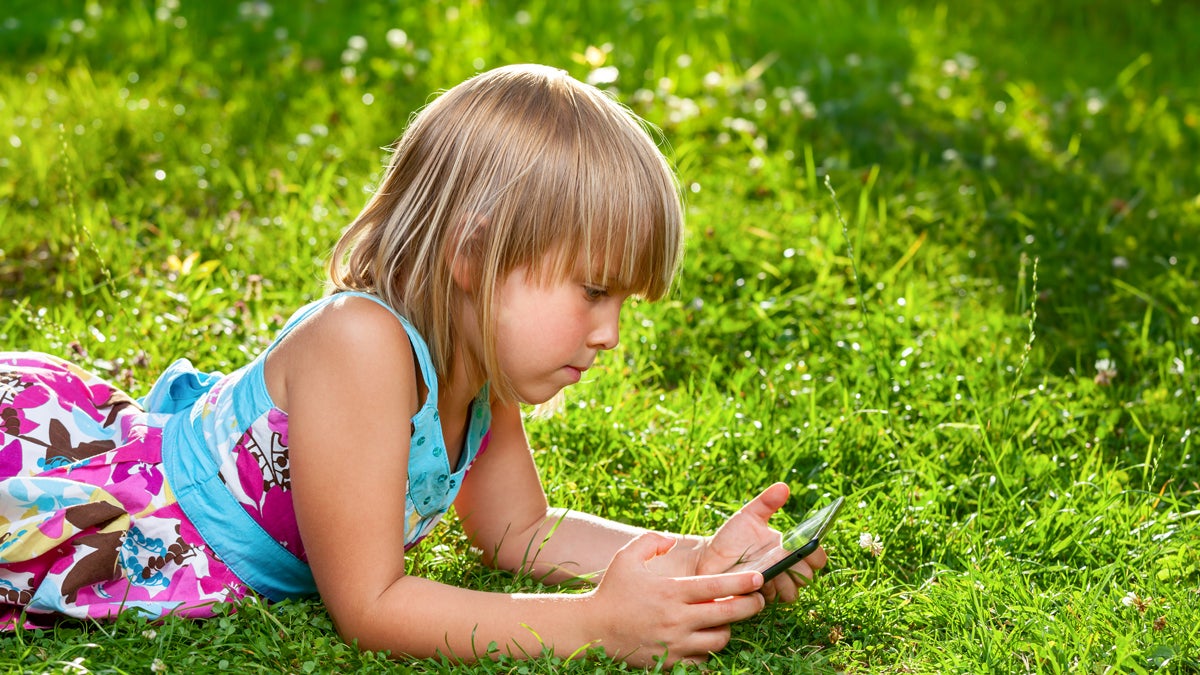Start building your kids’ e-library now

(Little girl using a tablet computer image courtesy of Shutterstock.com)
For years, hard-copy “read aloud” and “read alone” books have bridged the gap between picture books and chapter books. Supporting this all-important literacy bridge is the emergence of exciting, imaginative, fun-filled e-books.
Hard-copy “read aloud” and “read alone” books have traditionally bridged the gap between picture books for very young children and longer books with text divided into chapters with few if any illustrations. Digital technologies and the growing popularity of e-books have encouraged writers and illustrators to develop a large variety of new formats to help young readers make that transition.
These “bridge books” work for learning to read like training wheels work for learning to ride a bicycle. Series bridge books in particular have become an excellent way to encourage new readers. After children identify with a certain set of characters, they eagerly await each new adventure. In a March 3, 2014, Charlotte Observer article, “Building Your Home Library,” children’s freelance blogger Gi Hallmark lists 20 of the most popular series bridge books.
Supporting this all-important literacy bridge is the emergence of exciting, imaginative, fun-filled e-books that, for some electronic reading devices, can even include animations and sound. Many of the most popular hard copy-bridge books have already been reformatted and produced as e-books.
When characters move and talk, the e-book also becomes a bridge between books and TV and film, with an added advantage: At their own rate children can read and re-read each story while improving their literacy skills.
Bridge e-book development reflects the growing use of tablets, laptops and other digital technologies at home and in school. According to a recent Harris Interactive Study conducted for Pearson, an educational publisher, “most elementary and secondary students are using mobile devices in their studies, either in the classroom or at home. And, according to a new study, the majority would like to be able to use them more in class.”
In addition to surrounding children with books at school, a large home library also plays a major role in encouraging children to read. “Research confirms that reading matters and having books at home is a leading indicator of a child’s level of educational attainment,” writes Nora Carr in the January 3, 2011, eSchool Newsletter.
Even though many people enjoy the look and feel of hard-copy books, says Carr, “format might not matter.” Tablets, e-book readers and smartphones are becoming household devices as common as baby monitors, video cameras and digital recorders. A library of 1,000 or more books no longer needs to be shelved in bookcases that take up space and require maintenance. E-books are also less expensive and greener.
At school, e-books are easier to catalog and access. Of important interest to parents and teachers, Carr notes, “Amazon.com, for example, estimates that Kindle users buy and read three times as many books as they did before buying the popular e-reader device. Other surveys report similar results.”
That was 2011, already three years ago. According to Brad Spirrison in an October 22, 2014, Huffington Post article, “While many elementary, middle and high school students are already accustomed to technology-enabled classrooms, educators continue to incorporate digital learning innovations into their teaching styles.”
In the classroom, overhead projectors with text-enhanced illustrations provide a new group-reading experience. Animated stories accompanied by sound reinforce the simulated effect of interaction. Characters come alive through words that, by visual association, take on the vibrancy and color of the dialogue and narrative.
Unquestionably, bridge e-books add yet another dimension to the growing number of opportunities for children to improve their literacy skills both at home and school.
Helpful links for learning more about animated e-books:
BestAppsForKids.com: Ebook apps for kids
KiteReaders.com: “Evolution of Fixed-layout eBooks – An interactive time-line”
MovingTales.com
ReadWrite.com: “Moving Tales: Do Animated eBooks Have a Future?”
Tumblebooks.com
—
Susan Love is the author of “Ms. Love’s Mystical Island Adventure” with animations by Patrick Harrington.
WHYY is your source for fact-based, in-depth journalism and information. As a nonprofit organization, we rely on financial support from readers like you. Please give today.

